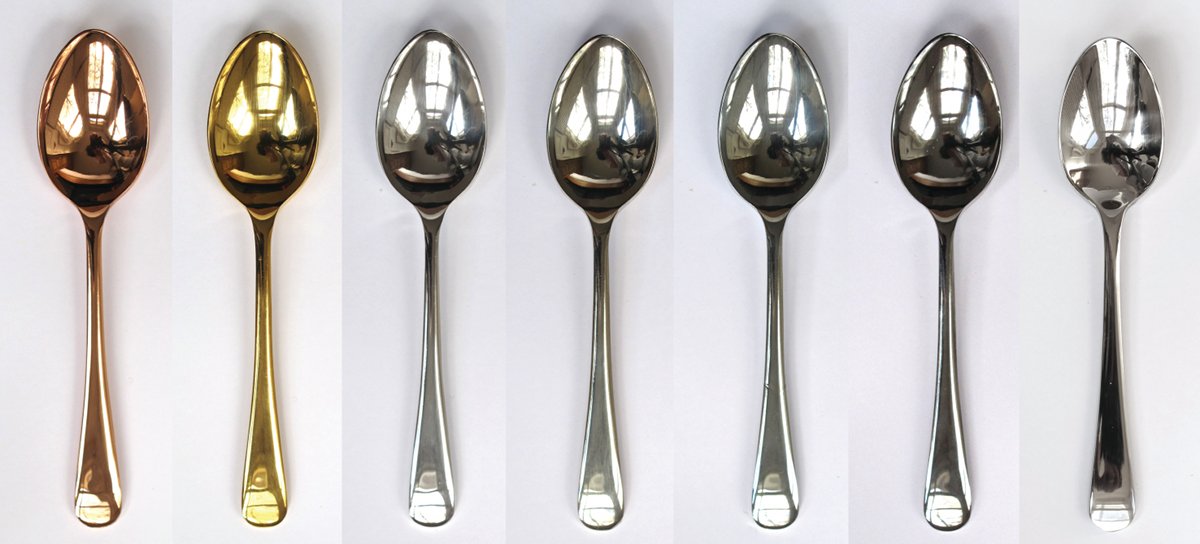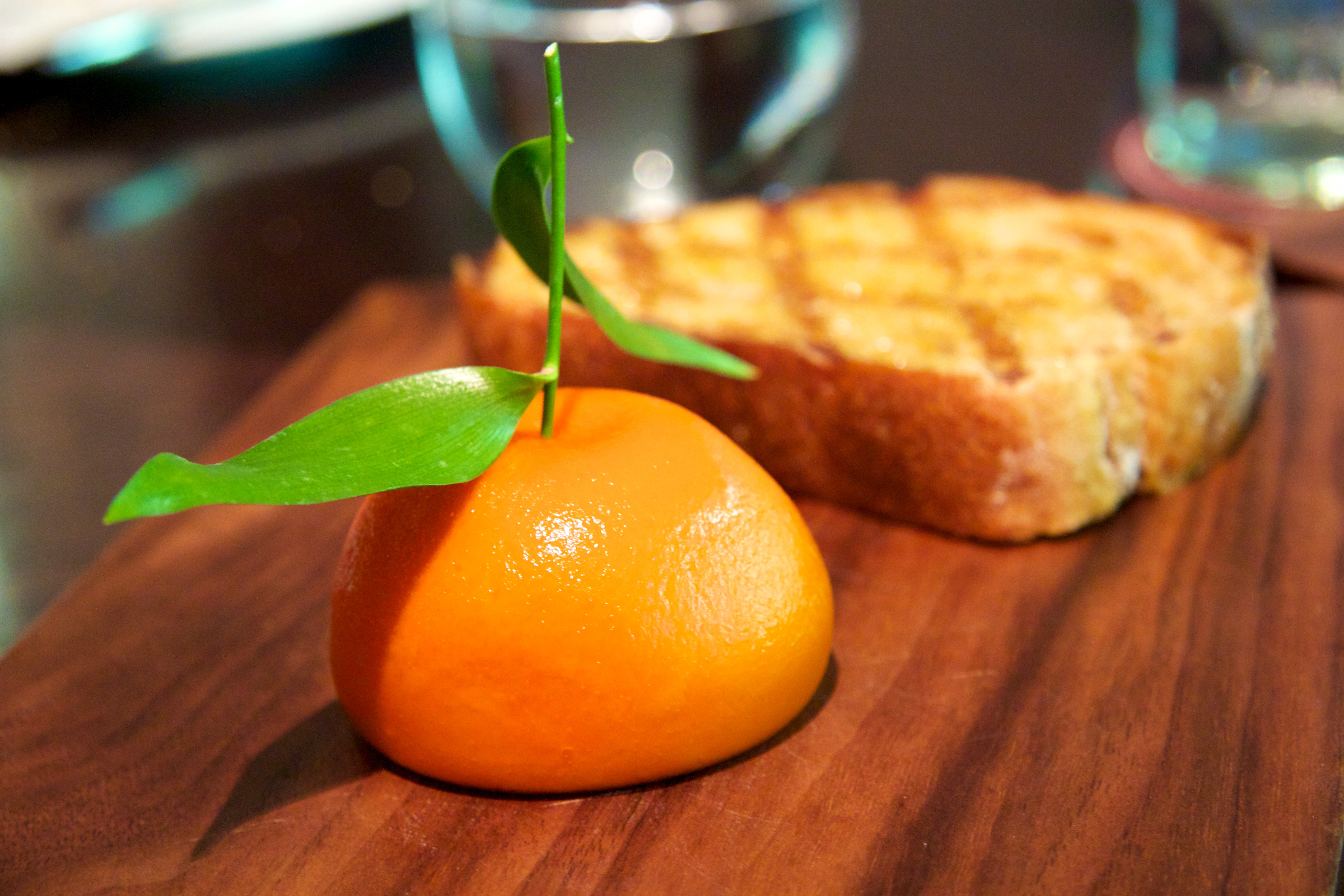|
Sensoaesthetics
Sensoaesthetics is the application of scientific methods to the study of the aesthetic, sensual and emotional aspects of materials. Overview The purpose of Sensoaesthetics is to understand how people interact with materials, and use that understanding to improve design and incorporate multisensory integration into the process. Another priority of Sensoaesthetics is to connect the Materials Science community with other disciplines such as Art and the design world, and reverse a perceived eradication of interest in the sensual and aesthetic properties of materials. The field has been developed by Materials Science academics, Professor Mark Miodownik and Dr Zoe Laughlin at King's College London and UCL, and through the work of the Materials Library at King's College, and the Institute of Making. Spoon Experiment The event was held in May, 2012 at Quilon, a Michelin starred Indian restaurant in London, by Zoe Laughlin and Mark Miodownik. The purpose was to study the taste of sol ... [...More Info...] [...Related Items...] OR: [Wikipedia] [Google] [Baidu] |
Zoe Laughlin
Zoe Laughlin () is a British artist, maker and materials engineer. She is the co-founder and Director of the Institute of Making at University College London. She is a regular panelist on the BBC Radio 4 show The Kitchen Cabinet. Laughlin was awarded the 2019 Inspire, Support Achieve Award for Design Engineering from the Institution of Engineering Designers. Education Laughlin took A-Levels in Art, Textiles and English Literature and completed a Masters of Art at Central Saint Martin's College of Art and Design. She earned a PhD in Material Science in the Department of Engineering at King's College London in 2010. Research During her PhD, Laughlin discovered how materials affects the taste of food, and how to predict the taste of food using electrode potential. Her thesis, "Beyond the Swatch: How can the Science of Materials be Represented by the Materials Themselves in a Materials Library?", became the basis for the methodological approaches of the Institute of Making ... [...More Info...] [...Related Items...] OR: [Wikipedia] [Google] [Baidu] |
Multisensory Integration
Multisensory integration, also known as multimodal integration, is the study of how information from the different sensory modalities (such as sight, sound, touch, smell, self-motion, and taste) may be integrated by the nervous system. A coherent representation of objects combining modalities enables animals to have meaningful perceptual experiences. Indeed, multisensory integration is central to adaptive behavior because it allows animals to perceive a world of coherent perceptual entities. Multisensory integration also deals with how different sensory modalities interact with one another and alter each other's processing. General introduction Multimodal perception is how animals form coherent, valid, and robust perception by processing sensory stimuli from various modalities. Surrounded by multiple objects and receiving multiple sensory stimulations, the brain is faced with the decision of how to categorize the stimuli resulting from different objects or events in the physical wo ... [...More Info...] [...Related Items...] OR: [Wikipedia] [Google] [Baidu] |
Mark Miodownik
Mark Andrew Miodownik () is a British materials scientist, engineer, broadcaster and writer at University College London. Previously, he was the head of the Materials Research Group at King's College London, and a co-founder of Materials Library. Education Miodownik attended Emanuel School in South London. In 1987 he went up to St Catherine's College, Oxford where he graduated with a Bachelor of Science degree in metallurgy. He completed his Doctor of Philosophy degree in turbine jet engine alloys at Linacre College, Oxford in 1996, specifically oxide dispersion strengthened (ODS) alloys. For the presentation of his doctoral work at Oxford, he was awarded the Hetherington Prize in 1995. Mark Miodownik says that his interest in materials came from an incident when he was stabbed in the back with a razor blade, on his way to school. Realising that a small piece of steel had done him so much harm started his interest in materials. Career and research Miodownik's scientific ... [...More Info...] [...Related Items...] OR: [Wikipedia] [Google] [Baidu] |
King's College London
King's College London (informally King's or KCL) is a public research university located in London, England. King's was established by royal charter in 1829 under the patronage of King George IV and the Duke of Wellington. In 1836, King's became one of the two founding colleges of the University of London. It is one of the oldest university-level institutions in England. In the late 20th century, King's grew through a series of mergers, including with Queen Elizabeth College and Chelsea College of Science and Technology (in 1985), the Institute of Psychiatry (in 1997), the United Medical and Dental Schools of Guy's and St Thomas' Hospitals and the Florence Nightingale School of Nursing and Midwifery (in 1998). King's has five campuses: its historic Strand Campus in central London, three other Thames-side campuses (Guy's, St Thomas' and Waterloo) nearby and one in Denmark Hill in south London. It also has a presence in Shrivenham, Oxfordshire, for its professional mi ... [...More Info...] [...Related Items...] OR: [Wikipedia] [Google] [Baidu] |
University College London
, mottoeng = Let all come who by merit deserve the most reward , established = , type = Public research university , endowment = £143 million (2020) , budget = £1.544 billion (2019/20) , chancellor = Anne, Princess Royal(as Chancellor of the University of London) , provost = Michael Spence , head_label = Chair of the council , head = Victor L. L. Chu , free_label = Visitor , free = Sir Geoffrey Vos , academic_staff = 9,100 (2020/21) , administrative_staff = 5,855 (2020/21) , students = () , undergrad = () , postgrad = () , coordinates = , campus = Urban , city = London, England , affiliations = , colours = Purple and blue celeste , nickname ... [...More Info...] [...Related Items...] OR: [Wikipedia] [Google] [Baidu] |
Institute Of Making
The Institute of Making is a multidisciplinary research club based at University College London. Composed of the Materials Library and the MakeSpace, its work focuses on hands-on research into materials and making from many different perspectives. Members are encouraged to "make, break, design and combine both advanced and traditional tools, techniques and materials". It was founded by directors Mark Miodownik, Zoe Laughlin and Martin Conreen in 2010 at King's College London and moved to UCL in 2012, officially opening on 16 March 2013. The institute has produced some notable projects and research in the fields of making and maker culture and sensoaesthetics Sensoaesthetics is the application of scientific methods to the study of the aesthetic, sensual and emotional aspects of materials. Overview The purpose of Sensoaesthetics is to understand how people interact with materials, and use that underst .... References External links The Institute of Making website {{authori ... [...More Info...] [...Related Items...] OR: [Wikipedia] [Google] [Baidu] |
Heston Blumenthal
Heston Marc Blumenthal (; born 27 May 1966) is a British celebrity chef, TV personality and food writer. Blumenthal is regarded as a pioneer of multi-sensory cooking, food pairing and flavour encapsulation. He came to public attention with unusual recipes, such as bacon-and-egg ice cream and snail porridge. His recipes for triple-cooked chips and soft-centred Scotch eggs have been widely imitated. He has advocated a scientific approach to cooking, for which he has been awarded honorary degrees from Reading, Bristol and London universities and made an honorary Fellow of the Royal Society of Chemistry. Blumenthal's public profile has been increased by a number of television series, most notably for Channel 4, as well as a product range for the Waitrose supermarket chain introduced in 2010. He is the proprietor of the Fat Duck in Bray, Berkshire, a three-Michelin-star restaurant which is widely regarded as one of the best in the world. Blumenthal also owns Dinner, a two-Michel ... [...More Info...] [...Related Items...] OR: [Wikipedia] [Google] [Baidu] |
Harold McGee
Harold James McGee (born October 3, 1951) is an American author who writes about the chemistry and history of food science and cooking. He is best known for his seminal book '' On Food and Cooking: The Science and Lore of the Kitchen'' first published in 1984'' On Food and Cooking: The Science and Lore of the Kitchen'' (1984) and revised in 2004. Education McGee was educated at the California Institute of Technology (Caltech), initially to study astronomy, but graduating with a B.S. in Literature in 1973. He went on to do a Ph.D. on the romantic poetry of John Keats supervised by Harold Bloom at Yale University, graduating in 1978. Career Before becoming a food science writer, McGee was a literature and writing instructor at Yale. McGee has also written for ''Nature'', ''Health'', ''The New York Times'', the ''World Book Encyclopedia'', ''The Art of Eating'', '' Food & Wine'', ''Fine Cooking'', and ''Physics Today'' and lectured on kitchen chemistry at cooking schools, un ... [...More Info...] [...Related Items...] OR: [Wikipedia] [Google] [Baidu] |
Design Museum
The Design Museum in Kensington, London exhibits product, industrial, graphic, fashion, and architectural design. In 2018, the museum won the European Museum of the Year Award. The museum operates as a registered charity, and all funds generated by ticket sales aid the museum in curating new exhibitions. History The museum was founded in 1989 by Sir Terence Conran, with Stephen Bayley was inaugural CEO, after the two men had collaboratively created the highly successful exhibition space known as The Boilerhouse at the Victoria and Albert Museum (V&A). Shad Thames site The museum was originally housed in a former 1940s banana warehouse on the south bank of the River Thames in the Shad Thames area in SE1 London. The conversion of this warehouse altered it beyond recognition, to resemble a building in the International Modernist style of the 1930s. This was funded by many companies, designers and benefactors. The museum was principally designed by the Conran group, with exhib ... [...More Info...] [...Related Items...] OR: [Wikipedia] [Google] [Baidu] |
Neuroaesthetics
Neuroesthetics ( or neuroaesthetics) is a relatively recent sub-discipline of empirical aesthetics. Empirical aesthetics takes a scientific approach to the study of aesthetic perceptions of art, music, or any object that can give rise to aesthetic judgments. Neuroesthetics is a term coined by Semir Zeki in 1999 and received its formal definition in 2002 as the scientific study of the neural bases for the contemplation and creation of a work of art. Neuroesthetics uses neuroscience to explain and understand the aesthetic experiences at the neurological level. The topic attracts scholars from many disciplines including neuroscientists, art historians, artists, art therapists and psychologists. Overview Neuroaesthetics is a field of experimental science that aims to combine (neuro-)psychological research with aesthetics by investigating the "perception, production, and response to art, as well as interactions with objects and scenes that evoke an intense feeling, often of ple ... [...More Info...] [...Related Items...] OR: [Wikipedia] [Google] [Baidu] |
Aesthetics
Aesthetics, or esthetics, is a branch of philosophy that deals with the nature of beauty and taste, as well as the philosophy of art (its own area of philosophy that comes out of aesthetics). It examines aesthetic values, often expressed through judgments of taste. Aesthetics covers both natural and artificial sources of experiences and how we form a judgment about those sources. It considers what happens in our minds when we engage with objects or environments such as viewing visual art, listening to music, reading poetry, experiencing a play, watching a fashion show, movie, sports or even exploring various aspects of nature. The philosophy of art specifically studies how artists imagine, create, and perform works of art, as well as how people use, enjoy, and criticize art. Aesthetics considers why people like some works of art and not others, as well as how art can affect moods or even our beliefs. Both aesthetics and the philosophy of art try to find answers for what exact ... [...More Info...] [...Related Items...] OR: [Wikipedia] [Google] [Baidu] |



